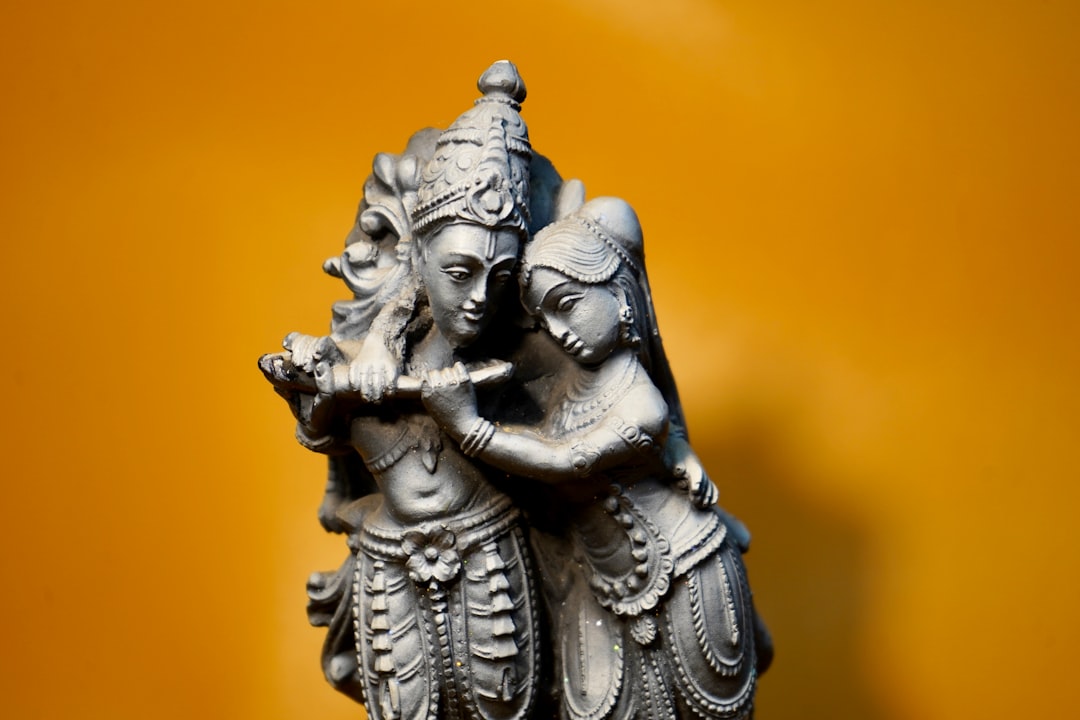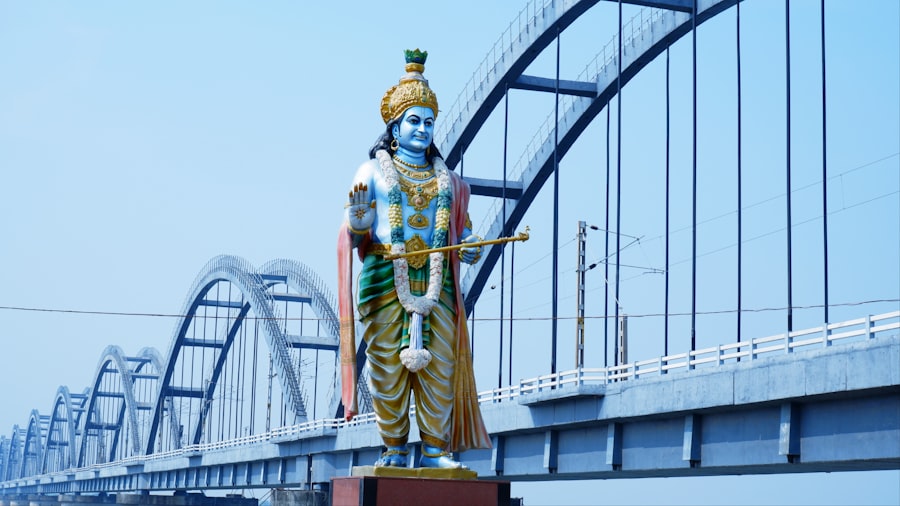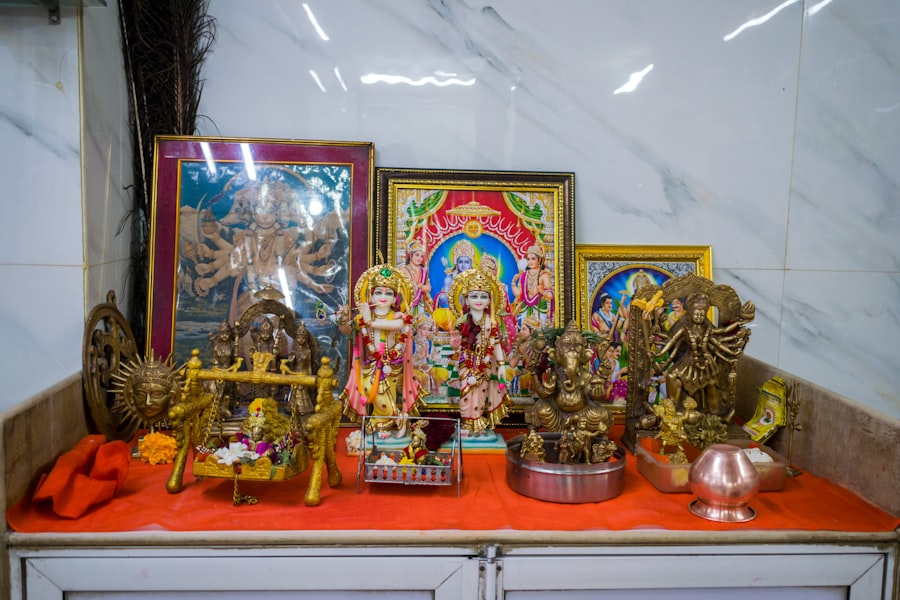
Hindu mythology is a complex and extensive system of beliefs, stories, and cultural traditions that have developed over thousands of years. It encompasses a wide range of narratives that explore the relationship between humans, deities, and the universe. These stories often contain moral lessons, philosophical concepts, and explanations for natural phenomena.
The roots of Hindu mythology can be traced to the Vedic texts, which date back to approximately 1500 BCE. These ancient scriptures provided the foundation for later mythological developments, including the Puranas and epic works such as the Mahabharata and Ramayana. The mythology continues to evolve, adapting to modern contexts while maintaining its core principles.
Central to Hindu mythology are concepts such as dharma (duty or righteous living), karma (the law of cause and effect), and moksha (liberation from the cycle of rebirth). The stories feature a diverse cast of characters, including gods, goddesses, demons, and heroes, each embodying different aspects of existence and morality. Hindu mythology serves multiple purposes within the culture.
It provides a framework for understanding the world, offers guidance on ethical behavior, and explores profound philosophical questions. The narratives are not merely entertainment but also serve as vehicles for transmitting cultural values and spiritual teachings across generations. As a living tradition, Hindu mythology continues to influence contemporary Indian culture and has spread its influence globally through literature, art, and spiritual practices.
Key Takeaways
- Hindu mythology is a rich and complex tapestry of stories, beliefs, and traditions that have been passed down through generations.
- The gods and goddesses of Hinduism play a central role in the mythology, representing various aspects of the universe and human experience.
- Epic tales such as the Ramayana and the Mahabharata are foundational to Hindu mythology, teaching important moral and ethical lessons.
- Symbolism and rituals are integral to Hindu mythology, with each deity, story, and practice holding deep significance and meaning.
- Hindu mythology continues to play a significant role in Indian culture, influencing everything from religious practices to everyday life and social customs.
The Gods and Goddesses of Hinduism
The Trimurti: Brahma, Vishnu, and Shiva
Among the most revered figures are Brahma, Vishnu, and Shiva, collectively known as the Trimurti. Brahma, the creator god, symbolizes the genesis of all existence, while Vishnu, the preserver, embodies the principles of order and harmony in the universe. Shiva, the destroyer, represents transformation and regeneration, illustrating the cyclical nature of life.
The Significance of Goddesses in Hindu Mythology
In addition to these principal deities, there exists a myriad of goddesses who play crucial roles in Hindu mythology. Figures such as Saraswati, Lakshmi, and Durga exemplify wisdom, prosperity, and strength, respectively. These goddesses are not merely passive figures; they actively participate in the cosmic drama, often intervening in human affairs to restore balance and righteousness.
The Worship of Hindu Deities in Daily Life
The worship of these deities is deeply embedded in daily life, with rituals and festivals dedicated to them that foster community bonds and spiritual devotion. This intricate web of divine personalities reflects the multifaceted nature of existence itself, where creation, preservation, and destruction coexist in a delicate balance.
The Epic Tales of Hindu Mythology

The Mahabharata and Ramayana stand as monumental epics within Hindu mythology, each offering profound insights into morality, duty, and the human experience. The Mahabharata, attributed to the sage Vyasa, is not only one of the longest epic poems in history but also a philosophical treatise that delves into complex themes such as justice, righteousness, and the consequences of war. At its heart lies the conflict between two families—the Pandavas and Kauravas—whose rivalry culminates in the great Kurukshetra War.
This epic is replete with sub-stories that explore the lives of its characters, including the noble Arjuna and his divine charioteer Krishna, who imparts timeless wisdom through the Bhagavad Gita. The Ramayana, traditionally attributed to Valmiki, narrates the life of Lord Rama, an incarnation of Vishnu. This epic tale chronicles Rama’s quest to rescue his wife Sita from the demon king Ravana, symbolizing the eternal struggle between good and evil.
The Ramayana is not merely a story of heroism; it also delves into themes of love, loyalty, sacrifice, and dharma. Characters such as Hanuman—the devoted monkey god—embody unwavering devotion and courage. Both epics serve as moral compasses for adherents of Hinduism, offering lessons that resonate across generations and cultures.
They are celebrated through various forms of art, dance, and theater, ensuring their continued relevance in contemporary society.
Symbolism and Rituals in Hindu Mythology
| Symbolism and Rituals in Hindu Mythology | |
|---|---|
| Symbol | Meaning |
| Lotus | Symbol of purity and enlightenment |
| Om | Represents the sound of the universe |
| Fire | Symbolizes transformation and purification |
| Swastika | Represents good fortune and well-being |
| Ritual | Significance |
| Puja | Act of showing reverence to a deity through prayers, songs, and offerings |
| Homa | Fire ritual to invoke the blessings of deities |
| Aarti | Ceremony of light, waving lamps to the deities |
Symbolism plays a pivotal role in Hindu mythology, enriching its narratives with layers of meaning that transcend mere storytelling. Many deities are associated with specific symbols that convey their attributes and powers; for instance, Lord Ganesha is often depicted with an elephant head symbolizing wisdom and the ability to overcome obstacles. Similarly, the lotus flower represents purity and spiritual awakening in various contexts throughout Hindu texts.
These symbols serve as visual metaphors that help devotees connect with deeper spiritual truths while also providing a means for reflection on their own lives. Rituals are another essential aspect of Hindu mythology that bring these symbols to life in tangible ways. Daily practices such as puja (worship) involve offerings to deities that may include flowers, fruits, incense, and prayers.
Festivals like Diwali and Holi are steeped in mythological significance; Diwali celebrates the victory of light over darkness through the return of Lord Rama to Ayodhya after defeating Ravana, while Holi marks the arrival of spring and celebrates love through vibrant colors. These rituals foster a sense of community among practitioners while reinforcing cultural identity. They serve as reminders of the divine presence in everyday life and encourage individuals to embody the virtues espoused by their mythological narratives.
The Role of Hindu Mythology in Indian Culture
Hindu mythology is deeply interwoven into the fabric of Indian culture, influencing various aspects such as art, literature, music, dance, and even social customs. The stories of gods and heroes resonate with people across different regions and communities in India, transcending linguistic barriers and regional variations. Festivals rooted in mythological events bring together families and communities in celebration, reinforcing social bonds while providing opportunities for cultural expression.
The narratives serve as a source of inspiration for countless artists who draw upon these rich traditions to create works that reflect both historical significance and contemporary relevance. Moreover, Hindu mythology has played a crucial role in shaping moral values within Indian society. The teachings embedded within these stories often emphasize virtues such as honesty, compassion, humility, and respect for elders—principles that continue to guide interpersonal relationships today.
The characters within these tales serve as role models for individuals seeking to navigate life’s challenges while adhering to ethical standards. In this way, Hindu mythology acts as both a mirror reflecting societal values and a guiding light illuminating paths toward personal growth and spiritual fulfillment.
Hindu Mythology in Modern Times

The Revival of Ancient Tales
This renewed interest has sparked a desire among younger generations to explore their cultural heritage while engaging with contemporary interpretations of ancient tales. Modern adaptations often blend traditional narratives with innovative storytelling techniques that resonate with today’s audiences, making these age-old stories accessible and relevant in an ever-changing world.
Cross-Cultural Exchanges and Global Understanding
Furthermore, this modern engagement with Hindu mythology has led to cross-cultural exchanges that enrich global understanding of these ancient traditions. Collaborations between artists from different backgrounds have resulted in unique interpretations that highlight universal themes found within Hindu narratives, such as love conquering hate or the triumph of good over evil.
A Shared Quest for Meaning
As globalization continues to shape cultural landscapes worldwide, Hindu mythology stands as a testament to humanity’s shared quest for meaning amid diversity—a reminder that stories have the power to connect us across time and space.
Exploring the Influence of Hindu Mythology on Art and Literature
The influence of Hindu mythology on art and literature is profound and far-reaching; it has inspired countless works across various forms throughout history. Traditional Indian art forms such as painting, sculpture, dance, and theater often draw upon mythological themes to convey deeper meanings or celebrate divine narratives. For instance, classical dance forms like Bharatanatyam or Kathak incorporate movements that depict stories from epics like the Ramayana or Mahabharata—transforming performances into visual storytelling experiences that captivate audiences while preserving cultural heritage.
In literature too, Hindu mythology has left an indelible mark on both ancient texts and contemporary works. Poets like Kalidasa have woven mythological elements into their verses while modern authors explore these themes through novels that reinterpret traditional tales for new audiences. The richness of these narratives allows writers to delve into complex human emotions—love, betrayal, sacrifice—while grounding their stories within a framework that resonates with readers on multiple levels.
As such, Hindu mythology continues to inspire creativity across artistic disciplines while fostering an appreciation for its timeless wisdom amidst an ever-evolving cultural landscape. In conclusion, Hindu mythology serves as a vital cornerstone of Indian culture and spirituality—a dynamic interplay between ancient beliefs and modern interpretations that enriches lives across generations. Its gods and goddesses embody universal truths about existence while epic tales offer moral guidance amid life’s complexities.
Through symbolism and rituals rooted in these narratives, devotees find connection with both the divine and their communities—reinforcing values that transcend time. As we navigate contemporary challenges shaped by globalization and technological advancements, exploring this rich tapestry can illuminate paths toward understanding ourselves within a broader cosmic narrative—a journey worth embarking upon for anyone seeking meaning beyond mere existence.
FAQs
What is Hindu Mythology?
Hindu mythology refers to the collection of traditional stories, legends, and beliefs that are an integral part of Hindu culture and religion. These myths often involve gods, goddesses, and supernatural beings, and are used to explain the origins of the universe, natural phenomena, and the roles and relationships of various deities.
What are some key deities in Hindu Mythology?
Some key deities in Hindu mythology include Brahma, Vishnu, Shiva, Lakshmi, Saraswati, Parvati, and Durga. Each deity has specific attributes, roles, and symbolism, and is often associated with particular rituals and festivals.
What are some popular Hindu myths and stories?
Some popular Hindu myths and stories include the Ramayana, the Mahabharata, the Puranas, and the various tales of the different avatars of Vishnu. These stories often contain moral lessons, ethical dilemmas, and complex characters that are revered and studied by Hindus around the world.
How are Hindu myths and stories passed down through generations?
Hindu myths and stories are traditionally passed down through oral traditions, recitations, and performances, such as religious ceremonies, festivals, and storytelling sessions. In addition, many of these myths have been written down in ancient texts such as the Vedas, Upanishads, and the epics like the Ramayana and the Mahabharata.
What role do Hindu myths and stories play in Hindu culture and religion?
Hindu myths and stories play a significant role in shaping the religious beliefs, cultural practices, and moral values of Hindu society. They are used to teach important life lessons, inspire devotion and worship, and provide a framework for understanding the nature of the universe and the divine.






